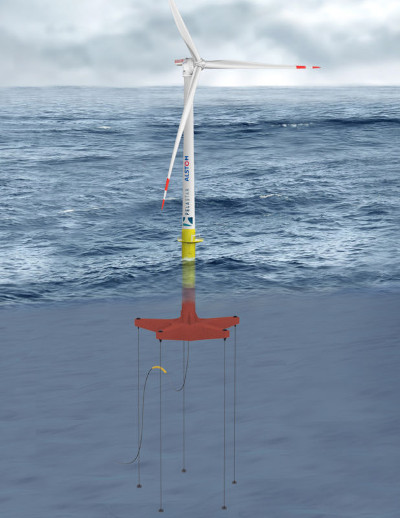Research by the Energy Technologies Institute (ETI) suggests floating turbines could account for almost 50% of the 55GW of global offshore wind capacity by 2050. While floating wind technology is still in its infancy and has not yet been proven at large scale, some projections indicate that it can reach cost parity with fixed-bottom turbines during the 2020s.
The world’s first full-scale floating wind turbine was installed off the coast of Norway in 2009, while Hywind Scotland, the first floating wind farm in the world with a capacity of 30GW, started to send electricity to the Scottish grid in October of this year, generating enough renewable power to meet the demand of 20,000 households.
October was also a significant month for floating wind as France opened the 2-MW Floatgen facility on the Atlantic coast. This is the country’s first offshore wind farm and was developed by a consortium of seven European partners with a view to fuelling the development of offshore windfarms in ever deeper waters where optimal average wind speeds are higher.
“With floating wind, we’re trying to access deeper waters, particularly where there’s quite high wind speeds,” Rhodri James, a manager at the UK’s Carbon Trust, told the UK’s Institute of Mechanical Engineers recently.
“If offshore wind deployment reaches 40GW, the ETI expects that 8-16GW of this could be provided by floating wind technology,” James said. He also believes Japan and the Mediterranean and Atlantic coastlines offer huge potential for floating wind farm development.
Other commercial floating wind projects are in the pipeline in the UK, France, Ireland and Portugal and Irene Rummelhoff, Executive Vice President of Statoil’s New Energy Solutions division, believes floating offshore wind will play a crucial role in offshore wind development in the future. This is a view shared by the International Renewable Energy Agency, which described floating offshore wind as “a game changer” last year.
Thomas Choisnet, Chief Technology Officer of Ideol – a Floatgen partner – says the market opportunities are huge: “Floating wind turbines can be installed on oceans worldwide, offering a solution to the problematic issues faced by countries where offshore bottom-fixed turbines are incompatible with the great depths off their coasts”.
With costs expected to fall as experience gleaned from the first floating wind farm projects is fed back into development and economies of scale start to take effect, investor confidence in floating wind technologies will rise, driving greater deployment.



No Comment